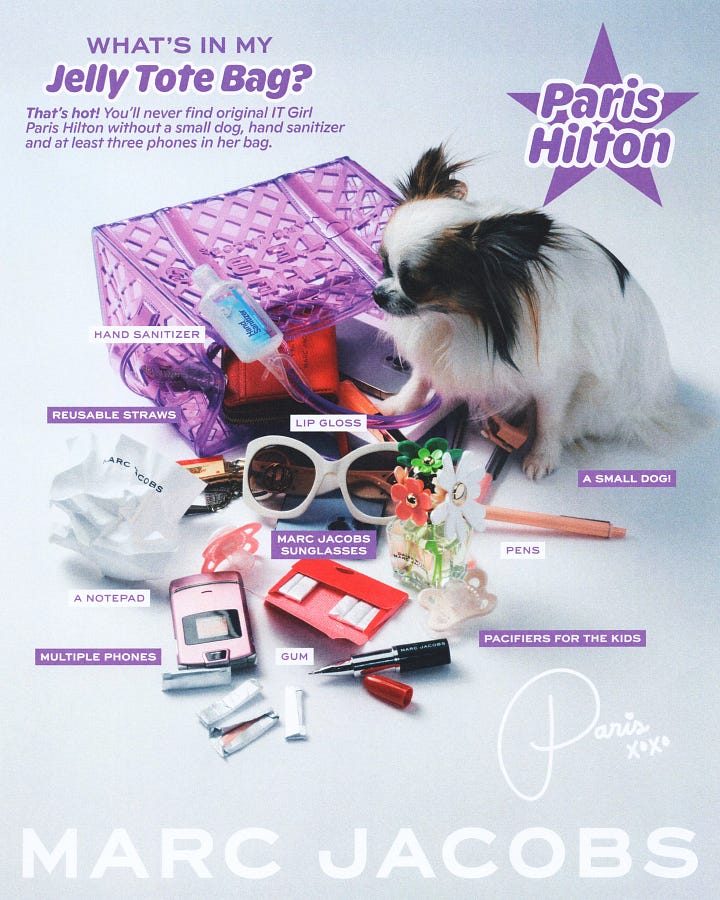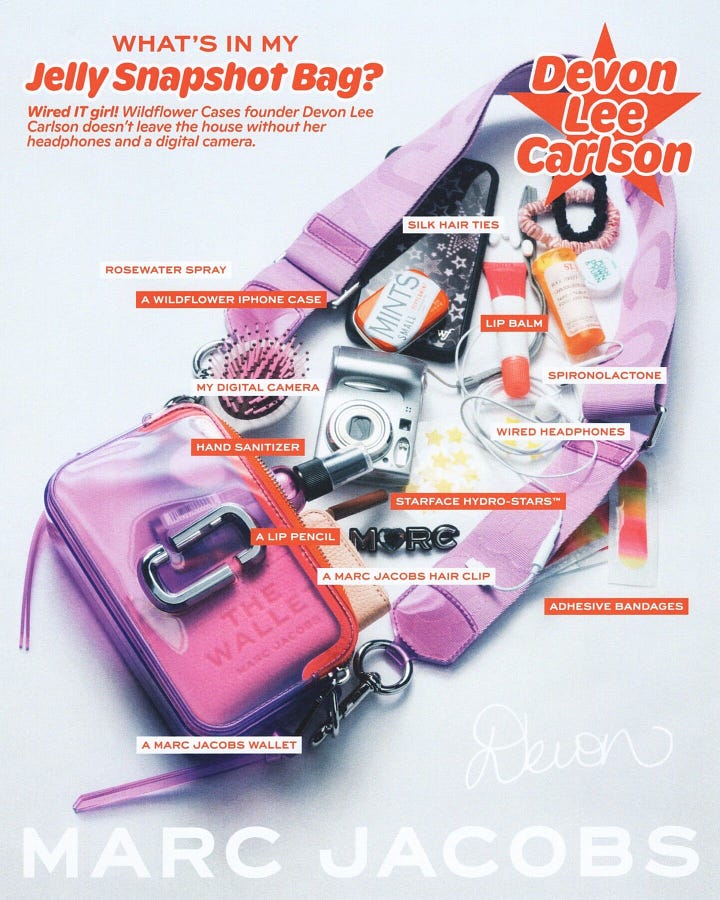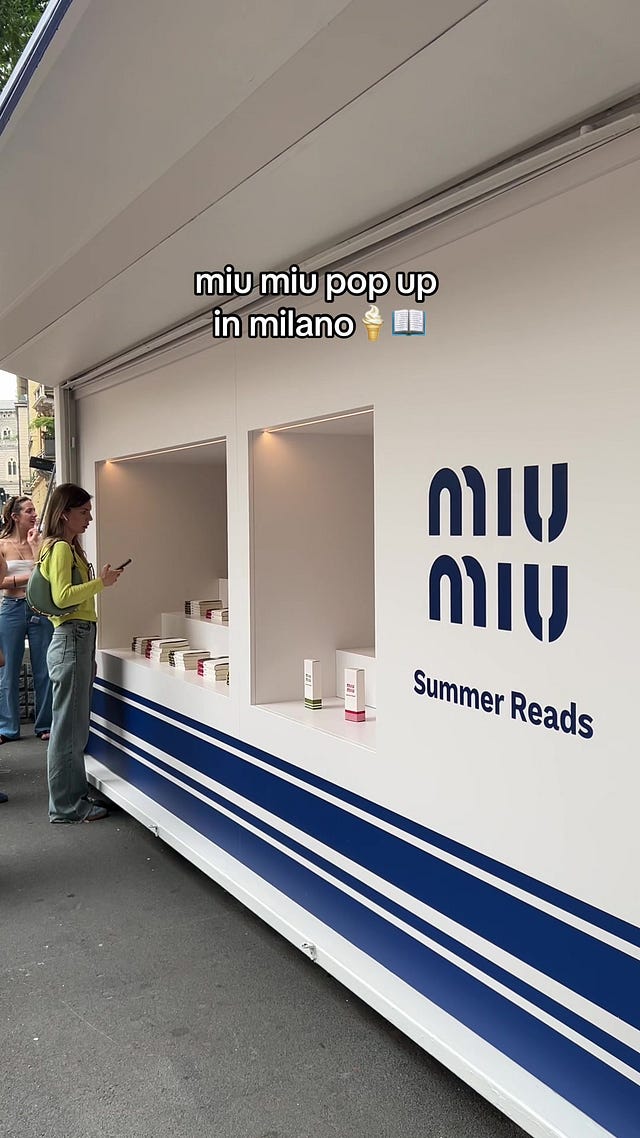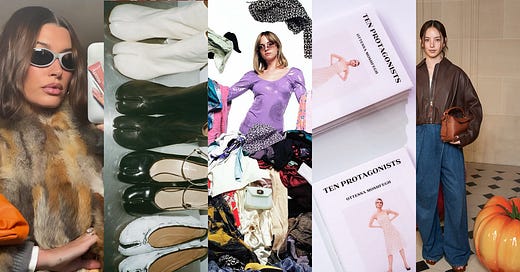Does Product Design Still Matter?
Styling trends are killing product trends as algorithms destroy originality
In ‘What Matters’, Matter shares its insight on the most pressing culture and consumer behaviour shifts it is analysing in its strategic output which will impact luxury in the near-to-middle term. We conclude with ‘Dark Matter’, a weekly look at the strange, curious and disconcerting news that will influence the evolution of our industry.
This week, Jonathan Anderson exits Loewe, Gen Z out-trend themselves and new data shows that, globally, humans may have passed peak brain power. Below, Matter explains what matters when brave design and distinct aesthetics no longer drive consumers to shop – and how vibes have overtaken products.
Unusually, in the current context of over-reporting designer exits and appointments — Jonathan Anderson’s much-expected exit from Loewe actually matters.
During Anderson’s tenure, Loewe led the industry in two fields: the team’s understanding of social media and internet culture, and the ability to design products with aesthetic ambition that achieved mass awareness (if still only responsible for a small proportion of sales). Without detracting from their success, its outsized impact was due to a specific moment in the zeitgeist: the emergence and dominance of short form video apps like TikTok. This enabled Loewe to cloak directional fashion in mass-cultural relevance.
 Tiktok failed to load.
Tiktok failed to load.Enable 3rd party cookies or use another browser
But the reach and amplification of TikTok has come at a cost. As Justin Moran, editor-in-chief of Paper Magazine, told Matter: “We are in an extreme state of mono-culture. All we do is sit on our phones, subject to the algorithm and what it is serving us.” One casualty is personal style. Alexandra Hildreth notes: “You can tell someone's screen time from their outfit.”
Way back in 2015, Anderson told POP: "I have huge faith in people. That they will buy something that is interesting. No matter what, people want challenging good design. I will work in this industry as long as I have this feeling. The minute that goes, I won't work. I'm not here to serve up what people want."
But in a world dominated by the algorithm, are consumers really still buying clothes because they’re “interesting”?
At scale, the prognosis is poor.
Dumb Consumers, Smart Design
Reversing the trend of millennia, new research suggests that homo sapiens are now diminishing in intelligence. As reported by the Financial Times, “data across countries and ages reveal a growing struggle to concentrate, and declining verbal and numerical reasoning.” Moreover, since 1975, IQ levels have dropped abruptly – by 7 points per generation, according to one estimate – and neuroscientists hypothesise that the culprits include “the current media environment, a decline in reading, and an increase in online activity”.
And while IQ is now widely considered an over-simplified means of calculating intelligence, our media consumption habits certainly impact the way we process and retain information (one Microsoft study suggests Gen Z have an average attention span of 8 seconds). Thanks to the combination of short-form video and endless-scroll algorithm-driven feeds. Today, the average American spends 13 hours and 7 minutes consuming digital media daily, totalling up to a 32 hour day of experiences, according to Activate Consulting.
But when this specific moment in the zeitgeist ends — consumer cohorts’ genuine interest in distinct products or original aesthetics is still perilously low.
Trends Aren’t Dead, They’re Different
Kyuhee Baik, who has overseen numerous luxury brands' entry into South Korea, tells Matter: “There’s no longer this obsession of trying to get your hands on a piece anymore. The notion of trying to stand out by purchasing something that is hyped, no longer [has] social cachet.” Product trends aren’t dead — Tabis, Alaïa ballet flats, the Hermès’ Kelly — but culturally, they pale in comparison to the cut-through of some historical product hits like Diesel’s Straight jeans, the Chloé Paddington (its first time round), or the Air Jordan Concords.
In an ever-faster content churn, the monolithic “it bag” or “it shoe” has given way to an endless stream of vibes. This is the age of elevated errands. Everything is a look, be it quiet luxury, villain-era, nepo baby, strawberry girl — anything. And vibes are achievable across the price spectrum – whether you’re wearing Hermès, Khaite, Max Mara, Zara, or Shein. The product doesn't matter. The look does.
Thom Bettridge, editor-in-chief of i-D tells Matter: “Trends come on much harder, but also exit and become cringe much faster. We’re in a cringe spiral.”
High-Schoolers Agree
Earlier this month, the New York Times reported on the effect of this cringe spiral on Gen Z’s attitudes towards trends. One high school junior tells the Times: “Cheetah print was hot less than two months ago… and now when I go on TikTok, I see people saying, like, cheetah print is getting so old.”
But the Times’ take – that Gen Z’s are fatigued by the idea of an ever-new “it” purchase – while certainly the case in terms of sentiment, falls short at addressing the difference between product trends and styling trends. Consumers are now vibe-driven, not product-driven. They switch up their aesthetic identities regularly and need products that support that.
Thom Bettridge, editor-in-chief of i-D tells Matter: “There's an undercurrent that's very post-trend. If you use the metaphor of the ocean, the top is really turbulent and constantly changing, but underwater, things are the same. For example, with sneakers, there are many micro-trends that come and go quickly, but in reality, everyone's been wearing Samba-type shoes for three years.”
Get Ready With Whoever I Am Today
Coinciding with waning consumer trust in mainstream macro-influencers (according to a recent study by Wakefield Research, 87% of consumers believe it’s likely that influencers don’t even use the products they advertise), the organic “Get Ready With Me” #GRWM genre removed brand influence and presented a far more diversified sphere for consumers, mixing high and low, new and old, wealthy and budget options.
Videos with the hashtag #GRWM have been viewed more than 325 billion times and counting, the majority of which are not branded #sponcon adverts.
A key component of styling videos online is the performance and telegraphing of taste and knowledge. As a result, Gen Z consumers are looking to step into and out of a variety of identities rather than subscribe to one trend at a time.
Jian DeLeon, the fashion director for Nordstrom explained to Matter: “Customers don’t say, ‘who am I going to be?’, they say, ‘Who am I going to be today?’”
“There’s no real loyalty to aesthetics as much because of how the speed of trend works,” he says. In China, the Gen Z consumer is increasingly knowledgeable about fashion, whilst being less tied to any one aesthetic. “Young, cool Gen Z kids today mix very high-end and low-end, foreign and Chinese, all at once,” says Bohan Qiu, founder of Shanghai and Seoul based creative agency BOH PROJECT, which has worked with Supreme and Lemaire, “They’re exposed to all these influences at the same time.”
Servicing Vibes
A 2024 Ipsos study showed that when making luxury purchases, Gen Z are more interested in self-narration than material possession: 69% agreed that “the luxury brands I wear express some- thing about me”. Consumers are now vibe-driven, not product-driven. They’re storyboarding their lives, interested in inhabiting a variety of identities and narratives.
Today, trends are ultimately consumers dressing in character for the aestheticised lifestyle experiences they intend to publish on social media.
For many high potential aspirational luxury customers, fulfilment is finding wear occasions for trend-based styles matched to urban lifestyles. Dressing specifically for an occasion is now a widespread activity, that is a hobby in and of itself, because of the way ALCs today broadcast their lifestyle on social media.
Brands would be well advised to create a blueprint of aesthetic environments and identities varied enough to be engaging, but consistent enough to maintain brand presence rooted around urban lifestyle use-cases for their products. Be it skating with friends, or watching kids in a park.
“People are more driven by [whether] something’s actually bringing them a connection to their fulfilment or their purpose, especially if it’s connected with community,” Asha Harper says, “And a lot of brands are trying to pivot back to the service module structure, rather than just storytelling for the sake of storytelling.” Now, consumers are gathering around products created in service of ongoing lifestyle activities — real or otherwise — rather than brief fashion trends.
What does this mean for brands today?
1. Focus on responsive marketing, not responsive product creative
For Marc Jacobs, “interesting” products are besides the point – instead, why not put (a visibly stressed-out) Lil Uzi Vert in an elevator and tell him he has to bring a cake upstairs, get Kyle MacLachlan to make a GRWM, or ask Paris Hilton what’s in her bag? Highly present within the attention economy, Marc Jacobs have successfully created a series of entry-points which allow consumers to telegraph their belonging to an in-the-know community at the forefront of the zeitgeist. The products themselves are not innovative, but rather associative. The design of the tote-bag is simple in concept and execution, channeling individuals’ affinity to the brand via their affinity to digital culture.


2. Create products that support a style-first, product-second lifestyle
Styling has become particularly important as a newer wave of formalisation meets an older wave of casualisation (via the impact of streetwear on fashion). Consumers are looking for products which can be worn for a variety of use-cases and wear-occasions. No one would call the Adidas Samba an interesting shoe. But as Thom Bettridge remarked, the terrace shoe’s simple and unobtrusive silhouette allows it to operate as a blank canvas for a consumer almost constantly plagued by new aesthetic trends to style and experiment with.
As Jian DeLeon, men’s fashion director at Nordstrom, tells Matter: “The Adidas Samba was so closely associated with blokecore and that just led to this overall trend of low-profile soccer shoes. But it's not that everybody was subscribing to that certain trend. It's just that that shoe was so emblematic of that trend that it became a further integrated part of the zeitgeist.” The Puma Speedcat and those Adidas SL 72 OG Bella Hadid recently sported are just shiny new versions of the same old style.
3. Miu Miu-ification: Aesthetic Trend, Not Brand Narrative
The creation of a specific style identity supersedes any specific product. Miu Miu’s youthful, ultra-feminine, casual, academic and sporty look has become the most commercially engaging global aesthetic, despite being rather a mouthful.
The key takeaway here is to match creative vision with brand rigour, thereby proposing an alternative viewpoint that is genuinely distinctive – and back it with sufficient budgets. Not everyone can be Miuccia Prada, but this success comes down to styling, talent, marketing, as well as activations like the Writing Life literary club and the Summer Reads pop-up in Paris, which were not centered around product but rather around curating and adding to the Miu Miu ‘vibe’.

 Tiktok failed to load.
Tiktok failed to load.Enable 3rd party cookies or use another browser
Indeed, if brands want to be interesting in themselves, then they must create an aesthetic that transcends product. With Ottessa Moshfegh writing short stories for Prada and Kaia Gerber’s Library Science book club collaborating with Dôen on a “reading dress”, fashion is leaning into interesting as a vibe, rather than a product brief – as Vogue Business reported last summer, "in an age inundated with constant imagery, fashion is leaning on the written word to regain — or, at least, embrace — a sense of intellectualism.” (And, if people really are getting dumber, literacy might well be the new luxury).
What Matters
Without specific product heat, businesses are going to have to work significantly harder to transfer value to their customers. Outside of brand-led aesthetics (of which there are few and which Miu Miu currently dominates), the reality is that styling trends are the territory of consumers, not brands – meaning that it is brands who have to justify their belonging within any given overarching aesthetic.
Dark Matter
Are we approaching a world without impulse purchases?
The use of GLP-1 medications among 12- to 25-year-old Americans surged nearly 600% between 2020 and 2023 – University of Michigan
“GLP-1 drugs could lead to profound economic and social change by enhancing productivity and freedom. Some business models could be upended. If craving can be controlled, junk-food companies, advertisers and even drug-dealers may shift their focus from quantity to quality” – The Economist









‘Trends aren’t dead, they are different’ so true, I agree!